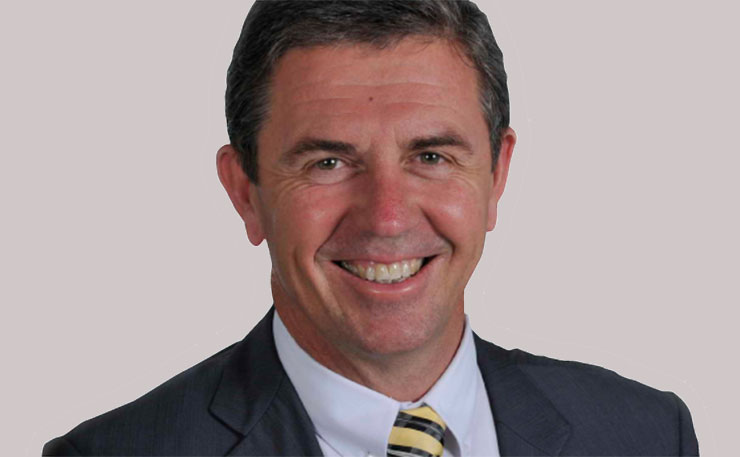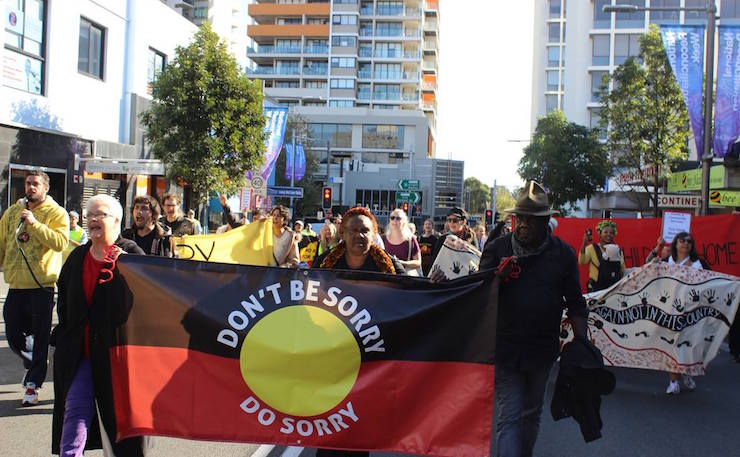The removal of Aboriginal children from their homes – and where to place them – is complex and fraught process, and not fodder for politics or morning television. Jacynta Krakouer and Sarah Wise explain.
Recent comments by Federal Children’s Minister David Gillespie, that we need not hesitate to place ‘abused’ Aboriginal children into adoption arrangements with ‘white families’, have been widely reported in the media, prompting both outcry and support among Indigenous and non-Indigenous commentators.
Gillespie’s argument that we need not be concerned about creating another Stolen Generations is completely unsound. What has failed to rate a mention in the coverage of this issue is the fact that Aboriginal and Torres Strait Islander children are already placed in care with non-Indigenous families in large numbers.
Australia’s child protection systems are among the most risk-averse in the world. The state intervenes often into the realm of family to ensure the protection of Australia’s children, investigating 119,173 cases of suspected child abuse or neglect last financial year (2016-17).
More than 36% of all Australian children living in care are Aboriginal, and a sizeable proportion are being looked after by non-Indigenous carers. As one example, in Victoria a 2016 report by the Commission for Children and Young People stated that almost 50% of all Indigenous Australian children in care are looked after by non-Indigenous carers, many of whom lack cultural awareness training.
While placement in care may be necessary for children’s immediate safety, separation from family, community, country and culture places Indigenous children at risk of unstable and culturally inappropriate childrearing, cultural disconnection and subsequent social and emotional problems.

Recent findings from the Royal Commission into Institutional Responses to Child Sexual Abuse also highlight the fact that children are not always safe in care. Of the 257 survivors who shared their painful histories, 66% stated that they had been abused in home-based care with either a foster or kinship carer, while 37% said they had been abused in residential care.
Aboriginal and Torres Strait Islander children are being removed from their families at inordinate rates; Indigenous Australian children are nearly 10 times more likely to be removed from their families and placed in care than non-Indigenous children. This disproportionality is nothing less than a crisis. In fact, the Secretariat for National Aboriginal and Islander Child Care (SNAICC) expects that the population of Indigenous children in care will more than triple by 2036 if the increasing trend of overrepresentation is not stopped.
But Gillespie is right on one point; something must be done about Aboriginal children living in families where they have been harmed or where there are strong indications that they are likely to be harmed. We all feel the necessity and urgency of doing something transformative. But reductionist and simplistic solutions such as adoption by white families, no matter how well-intentioned, will not achieve the results we desire. Indeed, policies such as this are likely to make the situation worse.
Safeguarding Aboriginal children is full of complexity, uncertainty, dilemmas and tensions. The fact that people who care deeply about this issue cannot agree on a way forward demonstrates the difficulty of the challenge we face. Real and lasting change will only happen if change agents are willing to embrace and work in complexity.
Successful long-term strategies do not come from one individual, but emerge from the continuous, purposeful interaction among people. This means families, communities, professionals, researchers and policymakers must work together purposefully and with a clear vision of the future we want for Aboriginal families and communities in distress. This is to understand and change the deep causes of family and community dysfunction and the deficits in our systems for protecting children.
Three key principles need to guide us in this work. They are Aboriginal self-determination, prevention and early intervention (to avoid harm to children and prevent them from entering the child protection and care systems), and protection of the cultural rights of Aboriginal children already in care.
The latter can be achieved by upholding the Aboriginal Child Placement Principle (Aboriginal children placed with Aboriginal carers) and by:
- ensuring that workers and carers are culturally competent;
- that the fundamental importance of culture is better understood by workers placing children in care;
- enhancing collaboration between Aboriginal Community Controlled Organisations and non-Indigenous agencies; and,
- ultimately, by acknowledging family as pertinent to the development of a strong cultural identity and connection to Indigenous heritage.
A national Commissioner for Aboriginal and Torres Strait Islander Children and Young People in care may provide appropriate monitoring, direction and oversight to improve culturally-responsive practice with Indigenous children in the future.
Donate To New Matilda
New Matilda is a small, independent media outlet. We survive through reader contributions, and never losing a lawsuit. If you got something from this article, giving something back helps us to continue speaking truth to power. Every little bit counts.




